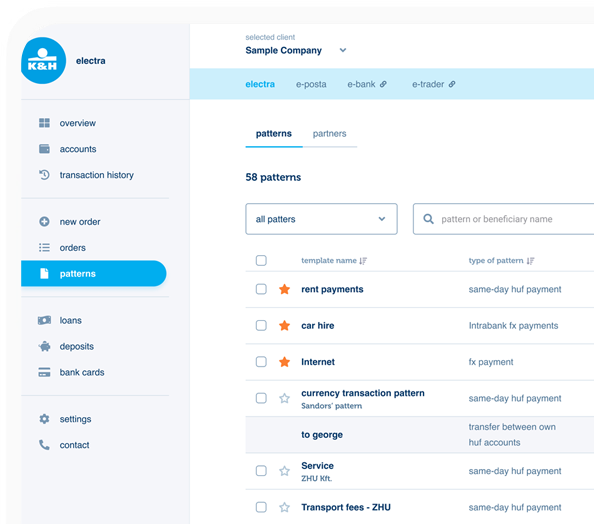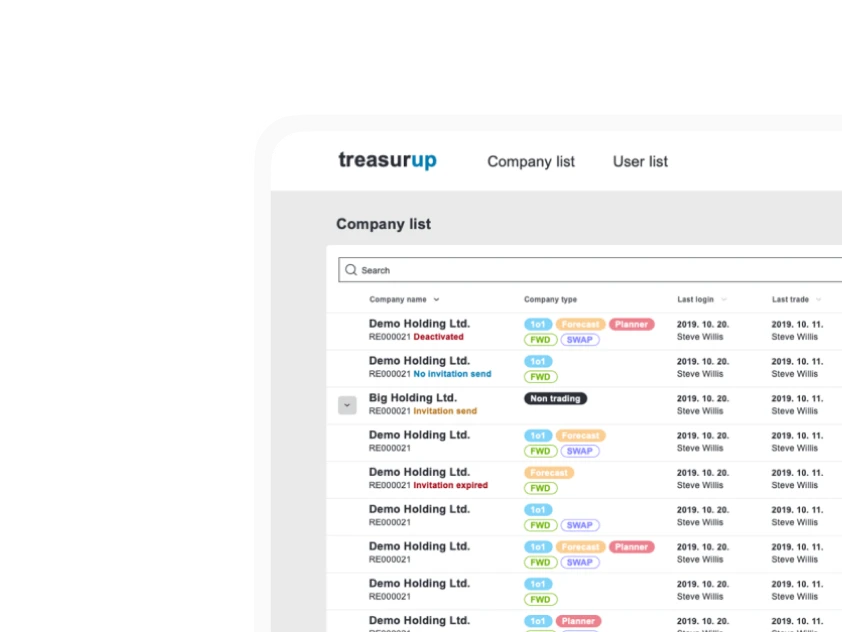How Automation is Shaping Digital Transformation in Banking
Driven by customer expectations and competition from agile fintech companies, banks are no longer simply financial institutions, but technology companies where data and automation are the most valuable assets. This transformation is powered by intelligent automation, which connects invisible back-office processes with proactive, personalized advice for customers. A successful transition is not about implementing technology for its own sake, but about consciously redefining the role of the bank, where human expertise builds on machine efficiency to create new value.
The global banking sector is undergoing a profound transformation. This process, commonly referred to as digital transformation, extends far beyond mere IT development and requires a complete rethinking of the business model. It is now clear that transformation is not only an opportunity but, as is often said, a key to survival. The new environment is forcing banks to streamline operations, optimize processes, increase security, and build a more agile, responsive, and, above all, customer-centric organization. Perhaps the most important element of this change is automation.
The Three Main Drivers of the Transformation Imperative
The rapid change in the banking environment is driven by three closely interconnected market trends.
- Changing Customer Expectations: Modern banking customers, especially Millennials and Gen Z, influenced by other industries, now expect personalized, convenient , and secure services available anytime, on any channel. Research by Deloitte underscores the magnitude of this shift, predicting that by 2026, more than half of the world's population will use digital banking services.
- The Fintech Revolution: The emergence of financial technology (fintech) startups and digital-only banks has disrupted traditional competition. Unburdened by legacy systems and bureaucracy, they have introduced innovative, customer-centric products that put immense pressure on traditional banks to accelerate their own development. (We wrote more on this here.)
- A Changing Regulatory and Market Environment: New compliance requirements, cybersecurity threats, and economic uncertainty demand faster responsiveness. Banks must become more efficient and resilient, which requires data-driven risk management supported by digital and automated systems.
Key Technologies: What Drives Banking Automation?
To understand the impact of automation, it is worth reviewing the technological tools behind it. These form a complex, interconnected system.
 The technological tools form a complex, interconnected system
The technological tools form a complex, interconnected system
Robotic Process Automation (RPA)
RPA is often the foundational layer of a bank's automation journey. It involves using software bots or a digital workforce to perform repetitive, rules-based tasks such as data entry, transaction processing, and report generation. Its great advantage is that it can be built on existing IT systems, delivering a quick and measurable return on investment. Implementing RPA can reduce processing time by up to 80% and manual errors by up to 90%.
Artificial Intelligence (AI) and Machine Learning (ML)
While RPA automates the execution of tasks, AI and ML automate thinking and learning. These systems analyze vast amounts of data to recognize patterns, learn from past experiences, and then make decisions or generate forecasts based on them. In the banking sector, AI is the engine behind complex processes such as dynamic credit scoring, real-time fraud detection, and predictive customer behavior analysis.
Intelligent Process Automation (IPA) and Hyperautomation
IPA, or in a broader sense, hyperautomation, combines RPA, AI/ML, and other advanced technologies (e.g., process mining, natural language processing). The goal here is no longer just to automate individual tasks, but entire end-to-end business processes. This is the highest level of banking automation, creating an intelligent, self-optimizing system.
The Foundations: APIs and the Cloud
The entire system is supported by two fundamental technologies: application programming interfaces (APIs) and cloud computing. APIs enable the connection of different software and form the backbone of the open banking movement (a system for securely sharing bank data with third-party apps based on user consent). The cloud provides the flexible and secure infrastructure needed to run advanced automation and AI solutions.
It is a common misconception that AI will eventually make RPA obsolete. In reality, they work in tandem: RPA performs routine tasks, while AI analyzes data, makes decisions, interprets unstructured data, and handles exceptions. This synergy has a much greater impact than the two technologies used separately.
The Competition Between Traditional Banks and Fintech Challengers
The era of digital transformation has created a new competitive landscape where traditional banks and agile fintech companies start with different advantages and disadvantages.
Fintech companies have the advantage of technological superiority and speed. Their strategy is often based on unbundling traditional banking services; they focus on a specific area (e.g., payments, lending) and provide an outstanding user experience there. Their advantages are technological superiority and agility, while their disadvantages are a lack of experience in the regulatory environment and the difficulty of building widespread customer trust.
Traditional banks possess a huge existing customer base, brand loyalty built over generations, and deep regulatory expertise. Their biggest challenge is integrating modern technologies into their often outdated, monolithic legacy systems. Their strategy increasingly relies on a combination of in-house development, strategic partnerships, and collaboration with or acquisition of fintech companies. The future likely belongs to a hybrid, ecosystem-based model where banks act as central platforms while integrating the best fintech innovations into their offerings.
Rewiring the Bank: Automation at Every Level
The introduction of automation is not an add-on activity but a fundamental transformation of the bank's entire operational and customer-facing machinery, from internal back-office processes to front-office customer service.
 Automation is not an add-on activity but a fundamental transformation of the bank's entire operational and customer-facing machinery
Automation is not an add-on activity but a fundamental transformation of the bank's entire operational and customer-facing machinery
The Silent Revolution: Modernizing Back-Office Processes
The most immediate and profound impact of automation is felt in the back office. The efficiency and accuracy achieved here lay the foundation for modern digital services.
- Compliance and Risk Management: Intelligent systems automate Know Your Customer (KYC) and Anti-Money Laundering (AML) processes, reducing compliance time by up to 50%. AI-based systems monitor transactions in real time to prevent fraud.
- Credit and Mortgage Processing: Automating the entire workflow from application submission to credit assessment and disbursement can shorten a process that previously took weeks to hours or minutes. One case study showed a 2.6-day reduction and 100% error elimination in mortgage processing.
- Core Financial Operations: Tasks such as account reconciliation or handling accounting entries can take up to 80% less time with automation.
The Front-Office Transformation: Intelligence and Hyper-Personalization
The efficiency gains in the back office create the foundation for a more intelligent and personalized customer experience.
- Omnichannel Customer Service: Automation ensures a unified customer experience across all channels. AI-powered chatbots and virtual assistants handle routine inquiries 24/7, allowing human customer service agents to focus on more complex, empathy-driven problems.
- Seamless Onboarding: Automation has transformed the previously paper-based and time-consuming account-opening process into a smartphone experience that can be completed in minutes.
- Hyper-personalization: This is the current pinnacle of front-office automation. Using AI, real-time behavioral data, and predictive analytics, the bank can offer uniquely relevant products and advice to each customer. For example, an AI system that detects a customer has purchased international flight tickets can offer a personalized travel insurance package. This proactive, data-driven advice elevates the bank's role from a passive service provider to an indispensable financial partner, potentially increasing revenue per customer by 5%‒15%.
Avoiding the Pitfalls: Implementation Challenges
The digital transformation path supported by automation is fraught with significant challenges. Successful banks focus on the following areas:
- Legacy Systems and Integration Difficulties: This is the most frequently cited technical obstacle. The solution is gradual modernization: starting with non-invasive tools like RPA, then connecting old systems with APIs, and developing a long-term cloud migration plan.
- Data Privacy and Security Concerns: Automated systems handle vast amounts of sensitive data. Security must be built into the architecture from the design phase, with strong encryption, multi-factor authentication, and continuous monitoring (i.e., security by design).
- Cultural Resistance and Workforce Management: Employees often perceive automation as a threat. The solution is proactive (and empathetic) change management: communicating a clear vision that emphasizes human-AI collaboration and investing heavily in reskilling and upskilling the workforce.
- Lack of a Clear Strategy and ROI Measurement: Many automation efforts begin as isolated, tactical experiments. Success requires central governance (e.g., establishing a center of excellence, CoE) to direct the program, set standards, ensure alignment with business strategy, and measure KPIs.
- Regulatory and Compliance Hurdles: The financial sector is heavily regulated. The solution is compliance by design, i.e., involving legal and compliance teams in the design process from the outset and using explainable AI (XAI) models where possible to ensure transparency.
Ethical Questions: AI, Bias, and Trust
As AI plays an increasingly significant role in banking decisions, new ethical challenges arise. The greatest danger is algorithmic bias. If an AI model is trained on biased data, it can amplify existing societal inequalities. To avoid this, models must be continuously tested.
Many AI models operate as black boxes, which creates a transparency problem. The development of XAI is crucial for building trust and meeting regulatory expectations. In an industry where trust is the ultimate currency, investing in ethical AI is a strategic opportunity for brand building.
 The emphasis is shifting to augmenting human capabilities
The emphasis is shifting to augmenting human capabilitiesThe Future Workforce: Transformation, Not Replacement
Automation is fundamentally restructuring the workforce in the financial sector. While there will be significant job losses in manual, repetitive roles – a Wells Fargo analysis suggests up to 200,000 banking jobs could be eliminated in the USA in the next decade – technology is also transforming existing jobs and creating entirely new ones.
The emphasis is shifting to augmenting human capabilities. Accountants can become strategic advisors, and customer service agents can become complex problem-solvers. In parallel, there is an explosive growth in demand for new types of professionals: AI engineers, data scientists, and RPA developers. The key to a successful transition is investing in reskilling and upskilling the workforce. Examples from Singapore's DBS Bank (1,2) or the Dutch ING Bank (1,2) show that employees can be successfully redirected from roles affected by automation to new, higher value-added positions.
Strategy and Culture Go Hand in Hand
Digital transformation is not a one-time project but a continuous evolution. To succeed, banking leaders need a clear strategic vision and a renewal of organizational culture beyond technological investments. The most important conditions for success are the following:
- A Strategic Mindset: Automation must be treated as a C-level led, enterprise-wide business transformation, not a series of isolated IT projects.
- The Central Role of Data Management: Data is the new oil, but only if it is clean, organized, and secure. A well-functioning data platform is the foundation for future innovation.
- Ethical AI and Trust Building: Trust is the ultimate competitive advantage. Investing in ethical, transparent, and secure AI systems is fundamental.
- Rethinking Workforce Strategy: The future belongs to the collaboration between machines and humans. The key to success is training the existing workforce and attracting new talent.
- Ecosystem-Based Thinking: The future lies in flexible, API-driven platforms that can collaborate with the fintech ecosystem.
Digital transformation goes far beyond the implementation of individual technologies. Banking automation is not just an IT project, but a profound organizational and cultural renewal. The key to success is the recognition that the real goal is not to replace human labor, but to elevate it. Removing the burden of repetitive, administrative tasks creates space for strategic thinking, empathetic advice, and human relationships built on trust. Those financial institutions that treat automation both as a tool for efficiency and as a way to redefine their own identity and their relationship with their customers, will not only survive the changes but will also shape the future of banking themselves.









